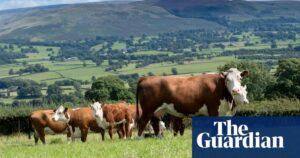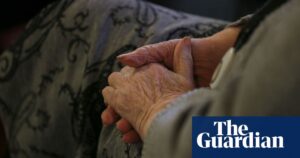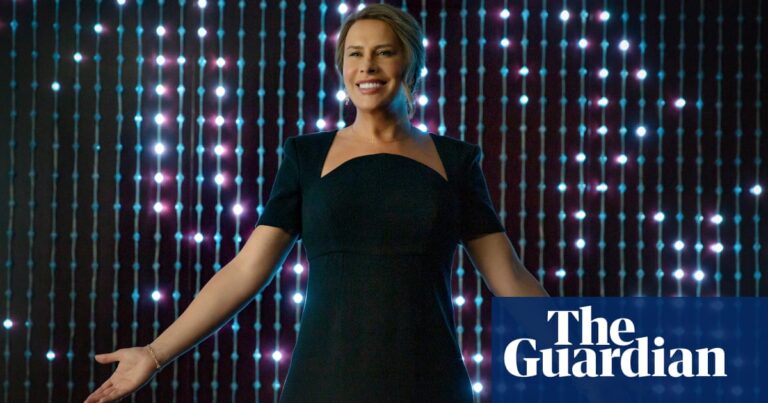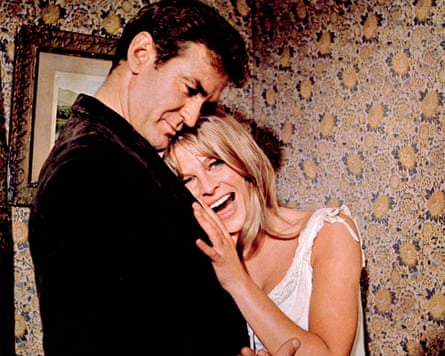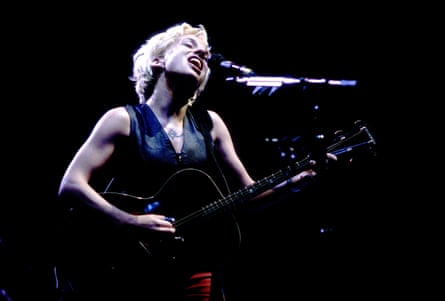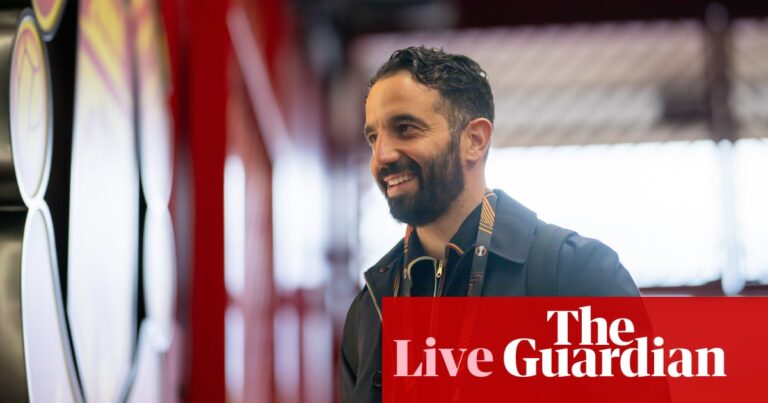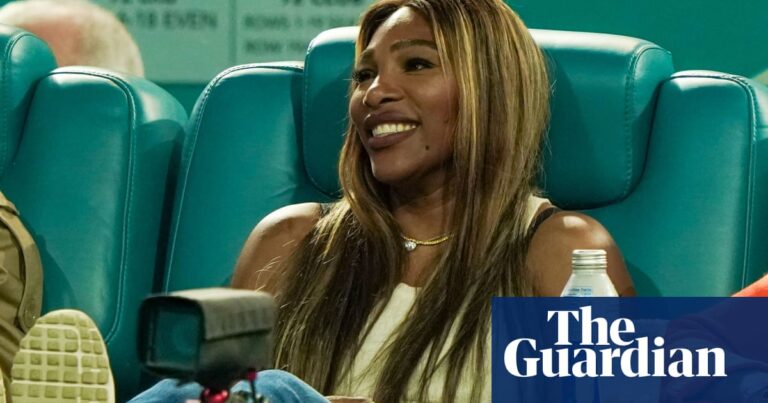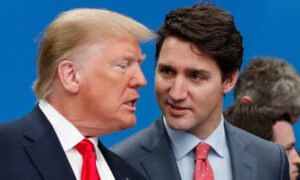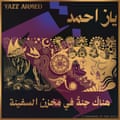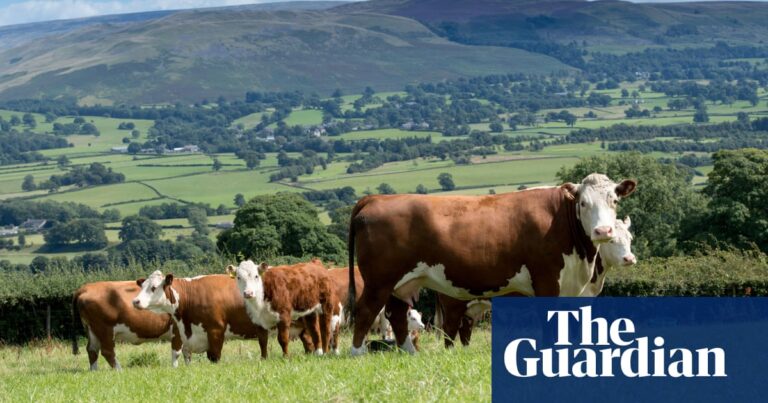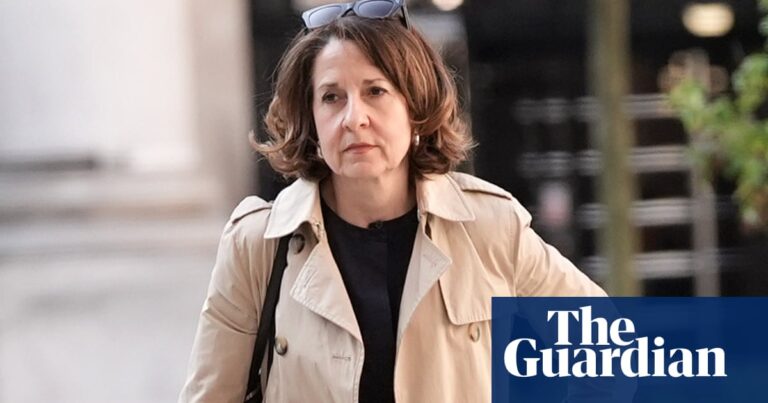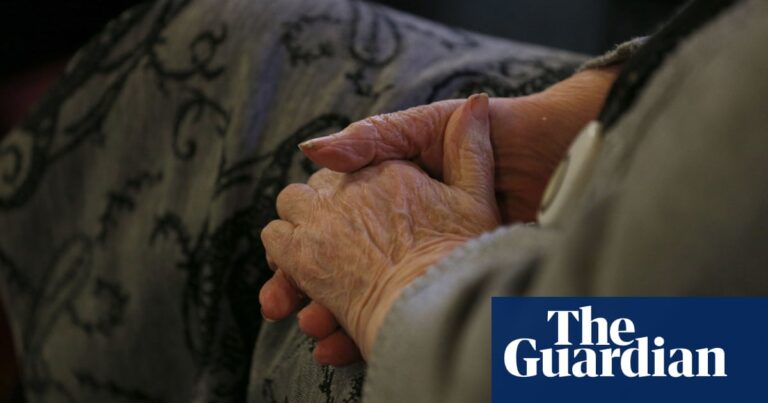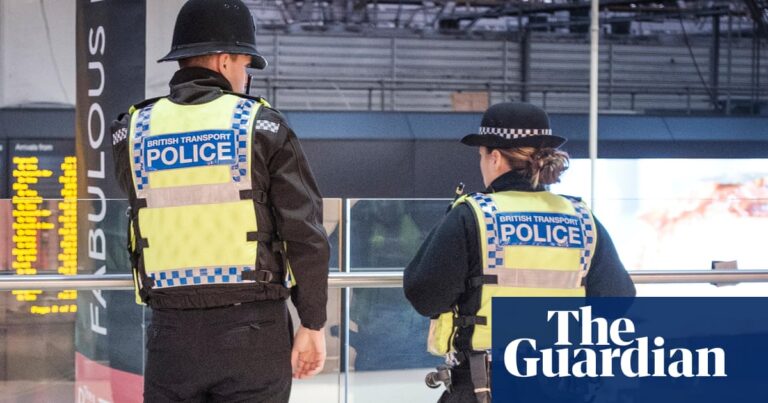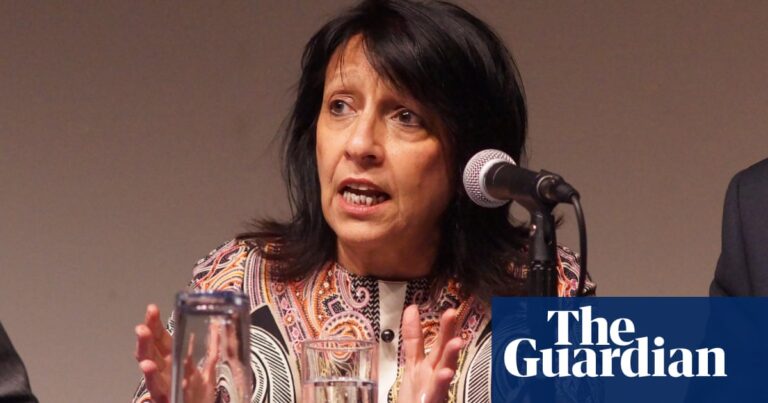In early 2023, De La Soul – Kelvin “Posdnuos” Mercer, Dave “Trugoy the Dove” Jolicoeur and Vincent “Maseo” Mason – were preparing the reissue of perhaps the most warmly loved discography in hip-hop. Their albums had long been absent from streaming platforms, due to disagreements with their old label, Tommy Boy, and issues over samples that needed to be cleared. “It felt like we’d been erased from history,” says Posdnuos. “A whole new generation wasn’t being introduced to our music.” After years of legal wrangling, the first six albums were primed to resurface, promoted by TV appearances and a show at the Royal Albert Hall in London. De La Soul’s long-awaited resurrection was about to happen.
But Posdnuos was anxious. While Maseo and their longtime producer Prince Paul had been working on the reissues, Posdnuos and Trugoy had spent 2022 on Gorillaz’s epic world tour, performing their collaboration Feel Good Inc each night. “Dave had been having issues with his heart for a few years,” Posdnuos says. “And it was a lot for him to go out and perform that song. I told Mase: ‘I don’t know how we gonna put new music out or play De La shows where Dave will have to be on stage for an hour.’ But I didn’t know how serious it was, because Dave wasn’t letting us know.”
Trugoy died on 12 February, two weeks before the reissues were released. “It was devastating,” Posdnuos says by phone, almost two years to the day after Trugoy’s death. “It’s still shocking to me.”
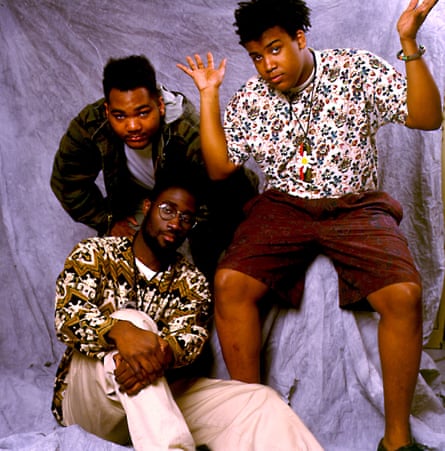
Their friendship had held strong for almost 40 years. The trio developed their bond in the summer of 1985, stuck inside studying at Amityville Memorial high school in Long Island, New York, having failed their English exam. Today, on a separate call, Maseo reckons that enforced stint in summer school was a “divine intervention”. Without it, they might never have become De La Soul, might never have reshaped rap’s macho paradigm in their own joyful image or kickstarted the Native Tongues movement that defined late-80s hip-hop in New York.
“Hip-hop drew us closer together,” says Posdnuos, speaking as he and Maseo prepare to reissue 2004’s The Grind Date. A budding DJ who wrote rhymes for friends, he never liked the sound of his voice, he says, although he loved messing about with Trugoy and Maseo, imitating heroes such as Slick Rick and Doug E Fresh. “But then I realised: Dave is actually good – the way his voice sounds, the cool metaphors he’s coming up with. And he’s egging me on, too: ‘Yo, Merce, I love your cadences.’”
This spirit of encouragement was crucial to the group’s development. Their conversational flows and lyrics laden with in-jokes seemed weird in the context of the braggadocious rap of the time, but in the safe space of Maseo’s basement, the nascent De La Soul flourished. “If we’d paired with other people, maybe we’d have tried to be braggadocious,” Posdnuos says. “But we implemented fun into our rhyming – the intelligence we displayed at school. Later on, we realised lots of other MCs and groups were clowning around like us, but when they got down to business they presented themselves in a different way. We put it on record.”
Collaborating on rhymes gave Posdnuos an intimate insight into Trugoy: “The way Dave would word things, it was a peek into another aspect of him. Like the way he could read a newspaper, the way he took in information – this fierce intelligence would come out in the way he chose to write.” But Trugoy also had an irrepressible humour that brought their music alive. “Dave could mess up a rhyme and then spin it off into saying something so silly and we’re all laughing. That’s where all the skits came from.”
Mason’s friend Prince Paul, a DJ and producer with the Brooklyn crew Stetsasonic, was taken with an early demo and adopted a protective, almost paternal role in the group. “Paul brought an amazing order to our young, chaotic, creative minds,” says Posdnuos. “He made sure our camaraderie continued in the studio and told us: ‘Stay supportive of each other.’” Paul loved the trio’s clowning and “kept the environment clean and safe for us: ‘No rules, just go for it!’”
And they did. The resulting debut album, 3 Feet High and Rising, still sounds like nothing else, a riotous whirlwind of daffy skits, rhymes that tempered wisdom with wit, and beats that lifted from pop and soul classics to became classics in their own right. 3 Feet High fielded anthems of oddball individualism (Me, Myself and I), anti-drug messages (Say No Go) and a sublime love song that stitched together Steely Dan’s jazz-rock licks and Otis Redding’s plaintive whistle (Eye Know), while Prince Paul translated the trio’s playfulness and in-joking into the skits that linked the tracks together.
Meanwhile, Tommy Boy cannily marketed the group. The sleeve designer Tony Mott later explained the DayGlo, flower-strewn sleeve as a conscious move away from “the prevailing macho hip-hop visual codes which dominate to this day”, while magazine ads depicted preppy white yuppies and middle-aged Black women who had gone shopping for U2 and Patti LaBelle albums, but came home with De La Soul instead. The inference was that De La Soul were reaching markets usually beyond rap’s reach. “People were so enamoured with the fluorescent colours, the bright messaging, sitting among everything else in the culture,” says Posdnuos of what the band called the daisy age. “They’d tell us: ‘You’re our introduction to listening to hip-hop.’ Our honesty – our vulnerability – was our superpower.”
The album topped Billboard’s R&B/hip-hop chart (and reached No 13 in the UK album chart). It spearheaded an insurgent movement of kindred spirits – including A Tribe Called Quest, Queen Latifah, the Jungle Brothers and Black Sheep – known as the Native Tongues. Received wisdom has it that the group then rebelled against the boho hippy image bestowed upon them with a self-inflicted sophomore slump, 1991’s De La Soul Is Dead. It did feature three wilted, unpotted daisies on the cover, but Posdnuos says the truth is more nuanced. “The second album was still bright and fun,” he says. “OK, the word ‘dead’ in the title doesn’t help … But we meant it to indicate we were transferring to another plane, that we were metamorphosing into older kids. We were just growing. It was a beautiful, funny, zany album.”
But there were also darker moments, he acknowledges – tracks such as My Brother’s a Basehead and Millie Pulled a Pistol on Santa, a decidedly unfestive narrative involving the murder of a sexually abusive father working as a department-store Santa. “My storytelling instincts were emerging,” says Posdnuos. “My own brother was a freebaser, so I based that song loosely on him; I’m glad to say he’s been sober for many a year now. And Millie was inspired by seeing a homeless guy in a Santa suit in the subway, but also by someone dear to me who’d been molested by her father. The emotion I put in my pen was real.”
De La Soul is Dead didn’t replicate 3 Feet High’s smash success, but it signalled their intention to evolve within a genre still so young that no one knew what a long-term rap career might look like. “Hip-hop used to be like dog years,” Maseo says. “You’d be over by your third album.”
But De La Soul’s third, 1993’s Buhloone Mindstate, was a mature, jazz-informed masterpiece, the zaniness tempered by loss, the waning of the Native Tongues collective and the responsibilities of adulthood. “We were all new parents,” says Posdnuos. “Our lives were changing, we were calming down. But we still really confident and secure in our creativity.”
Guest appearances from the funk veterans Maceo Parker, Fred Wesley and Pee Wee Ellis were inspirational. “It was amazing, the soulfulness of it all,” says Posdnuos. “We got to see them cookin’, coming up with things on the spot. Afterwards, we sat around with them for hours and the James Brown war stories came out. And the way they joked and bugged out … We were like: ‘That’s us! They just like us! We just don’t have instruments!’”
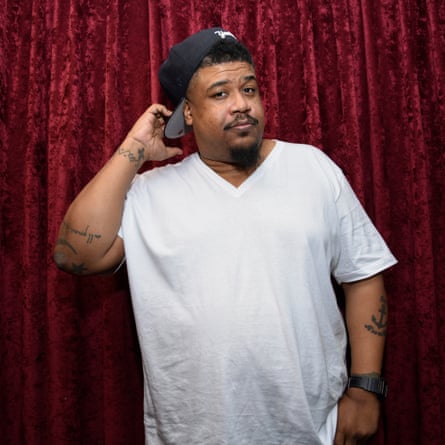
The terrain grew trickier for De La Soul, however. “Younger rappers were taking shots at us, calling us ‘old skool’ even before we had a fourth album out,” says Maseo. De La Soul’s fourth, 1996’s Stakes Is High, was dark and weighty, its title track a rumination on poisonous concepts of realness in hip-hop, produced by “the amazing, unfathomable” J Dilla. Posdnuos says Trugoy – “being the super-genius he is” – delivered the first verse in one take, “like the Old Testament, the Qur’an and the Torah wrapped together”.
Label troubles hobbled the third part of the mooted trilogy Art Official Intelligence, but in 2005 they were approached by Damon Albarn to make a record with Gorillaz. “It was a blessing,” says Maseo. “They offered us a track, but we explained we wanted to collaborate. That broke the ice for our brotherhood with Damon. Next thing, a lotta tequila and weed came out and he’s playing us 30 song ideas. Feel Good Inc popped up and it was a vibe.” The creative connection between the MCs remained as sharp as ever. “We was at this Ginsu-sharp level of rhyming,” Posdnuos says, referring to an American knife brand. “Me and Dave always playing off each other, even still.”
Even as they had to turn to crowdfunding for their most recent album, 2016’s And the Anonymous Nobody, the friendship between the trio sustained them. “Once you travel with someone, that’s when you get to know a motherfucker,” says Posdnuos. “We had to figure things out. Like: we on the bus for three months and Mase is smoking weed every day and I am sick of smelling weed. Merce wants the bus really hot, Dave wants it really cold. But we had brotherly love.”
Maseo agrees: “It’s a brotherhood, because friends fall out, perhaps for ever. But when your love is that deep, like family, you find a way to make things work out.”
Trugoy’s surviving brothers feel his loss keenly, but they are adamant that De La Soul will continue. “Mase and I had a conversation, four days after Dave’s death, and we were like: ‘We can’t stop, we gotta keep pushing.’ We got so much to give – for ourselves, for our legacy, for Dave. His family were adamant: ‘If you stop, Dave stops.’” They have continued to tour as a duo, often flanked by kindred spirits such as Yasiin Bey, Talib Kweli and Dres from Black Sheep; they say new De La Soul music will come out at some point.
Maseo says there have been “strong discussions” over reuniting with Prince Paul to cut new tracks, while a long-promised album with Pete Rock and DJ Premier and the unreleased third volume in the Art Official Intelligence trilogy weighted towards DJing and instrumentals – both recorded before Trugoy died – could be released. “It’s a responsibility at this point,” says Maseo. “Not just to hip‑hop, but to ourselves and Dave.”
Posdnuos adds: “It might sound weird, but when I’m on stage now, Dave is on stage with me. He’s there. It took a minute to get used to not hearing his voice when I’m expecting to hear him ad lib, or his rhyme is supposed to come in, but he’s there; I feel him. And now I gotta carry the rhyme on for him, with him speaking through me.”
Source: theguardian.com



